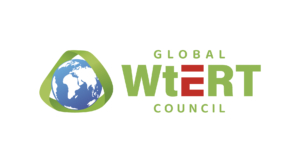Municipal Solid Waste Management in Italy
By Lucia Rigamonti
DIIAR – Environmental Section – Politecnico of Milan (Italy)
(Sept.-Nov. 2006 Visiting Scholar WTERT, Columbia University; Advisor: Prof. N.J. Themelis)
Italy is a European country with population of 58.5 million. It is divided into 20 regions that can be aggregated in three macro-geographical areas (North, Center and South). The generation of municipal solid wastes (MSW) in Italy in 2004 was 31.1 million metric tones. The source – separated collection of recyclables and compostables was 22.7% of the total MSW production. However, the situation is very different between the macro-geographical areas of Italy: the North has reached a value of 35.5%, the Center 18.3% and the South 8.1%.
The tonnage of MSW combusted at waste-to-energy (WTE) facilities more than doubled from 1.6 million in 1996 to 3.5 million tonnes in 2004. In general, the regions of the North of Italy are those that send to WTE facilities the largest quantity of MSW and RDF (Refuse Derived Fuel). In 2004, the mechanical-biological treatment (MBT) facilities managed about 9 million tonnes of MSW: 20% of these processes are dedicated to the production of compost, while the other 80% produce a large variety of materials such as bio-stabilized, dry fraction and RDF.
From 2000 to 2004, the number of landfills in Italy decreased from 657 to 401. The distribution of landfills is not uniform across the nation: most of them are situated in the South of Italy. Landfilling remains the principal way of disposal in Italy, but in the period of 2000 to 2004 the use of landfills decreased from 72.4% to 51.9%, whereas WTE increased from 8.5% to 9.7%. The use of mechanical-biological treatment and composting has remained nearly constant between 2003 and 2004 at about 28%.
